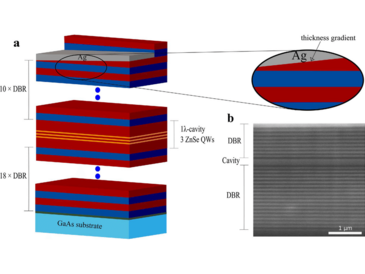SK. Shaid-Ur Rahman, Thorsten Klein, Sebastian Klembt, Jürgen Gutowski, Detlef Hommel and Kathrin Sebald.
Scientific Reports (2016) 6, Article number 34392
http://dx.doi.org/10.1038/srep34392
We present evidence for the existence of a hybrid state of Tamm plasmons and microcavity exciton polaritons in a II-VI material based microcavity sample covered with an Ag metal layer. The bare cavity mode shows a characteristic anticrossing with the Tamm-plasmon mode, when microreflectivity measurements are performed for different detunings between the Tamm plasmon and the cavity mode. When the Tamm-plasmon mode is in resonance with the cavity polariton four hybrid eigenstates are observed due to the coupling of the cavity-photon mode, the Tamm-plasmon mode, and the heavy- and light-hole excitons. If the bare Tamm-plasmon mode is tuned, these resonances will exhibit three anticrossings. Experimental results are in good agreement with calculations based on the transfer matrix method as well as on the coupled-oscillators model. The lowest hybrid eigenstate is observed to be red shifted by about 13 meV with respect to the lower cavity polariton state when the Tamm plasmon is resonantly coupled with the cavity polariton. This spectral shift which is caused by the metal layer can be used to create a trapping potential channel for the polaritons. Such channels can guide the polariton propagation similar to one-dimensional polariton wires.


